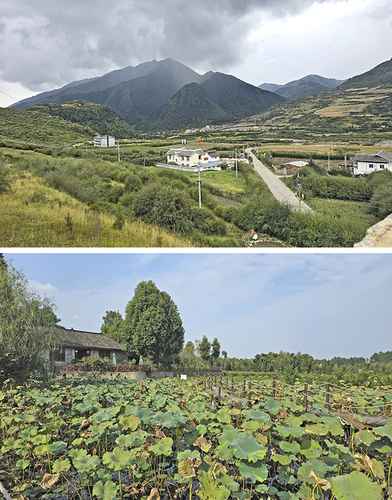▲ Aba, in the province of Sichuan, is a sample of rural China, where 56 ethnic groups coexist. Although yak breeding and agriculture are the main economic activities, it has begun to venture into tourism. In the last decade, primary activities in the region grew 211.9 percent and GDP per inhabitant grew 171 percent.Photo Dora Villanueva
Sichuan. There are no delivery drones, lines of electric cars or skyscrapers here. Hyper-technological China is left behind and in its place the yak takes center stage in the way of life. Skin, meat, bones, even the horns; everything deals with this bovine that has been the historical sustenance of a large part of the communities spread across the plains of Aba, where the majority of the Tibetan and Qiang population settles.
Established as an autonomous prefecture within the province of Sichuan, Aba is just a sample of rural China, but also of the political division expressed by the melting pot made up of a territory with 56 ethnic groups. Currently, other economic activities have been added to yak breeding and agriculture on this plateau, such as tourism and conservation tasks of spaces recovered for their rich landscape and biodiversity.
According to the information reported to the CEIC economic data platform, until 2023 the expansion of primary activities in the autonomous prefecture of Aba had grown 211.9 percent in a decade, while the gross domestic product (GDP) per inhabitant made at 171 percent. Technical agriculture, ecological tourism that entails conservation tasks and deep-rooted yak breeding are the main activities behind the increase in these indicators.
Aba is inhabited mainly by the Tibetan and Qiang minorities. It does not face the same level of political division as autonomous regions – such as Tibet, with the Tibetans; Xinjiang, with the Uyghurs; Inner Mongolia, with the Mongols; Guangxi, with the Zhuan, and Ningxia, with the Huis – but maintains part of its religious identity and the yak as a reference for economic activities. The bovid gives meat, milk and wool, and medicines are produced with its bones.
In Banyou, a village next to the Retchu tributary of the Yellow River, banners that combine the big star of the national flag with the hammer and sickle of the Communist Party of China (CPC) fly from each street lamp and the portrait of President Xi Jinping can be seen to the center of some houses. This town of Aba, which has 1,460 inhabitants, was the first that the Red Army soldiers found after crossing the region during the Long March that consolidated Mao Tse-Tung’s leadership at the head of the party.
Huts with pillars made of sticks and walls piled with yak dung have disappeared as part of a program to renovate housing and roads, access to drinking water and digital connectivity, in which 9 million yuan (just over 24 million pesos), according to what was reported by CCP representatives in this community. At present, the economic development of Banyou Village and the growth of farmers’ per capita net income top the list of the entire township
emphasizes Jiang Yu, secretary of the party section.
Gela, a Tibetan cattle rancher, opens his house on a tour organized by CCP leaders in the village. The photo of President Xi Jinping is one of the first things you see when entering a small room, which still looks luxurious. A sliding roof through which jets of light pass enhance the cleanliness of the space; The rugs, curtains, ornaments and flowers typical of an altar to worship Buddha add to the feeling of abundance. It all ends with a wall of bundles of green barley, which used to be a symbol of wealth.
Gela has 200 heads of yak, hence a good part of his income comes from the meat and milk of this animal. However, tourism receipts have been added to this activity. The stay in his house costs one thousand yuan (2,748 pesos) per night/day and includes the entire experience of this community, such as horseback riding and trying the food of the region, explains the rancher.
In another house of yak milk cheese producers, Jiang Yu explains that the income from yak meat can represent around 5 thousand yuan a year, but to this are added the income from yak dairy, fur and tourism, which has its main activities in June-July. Everything together makes the average income of families in this town reach 100 thousand yuan a year to support eight members on average.
